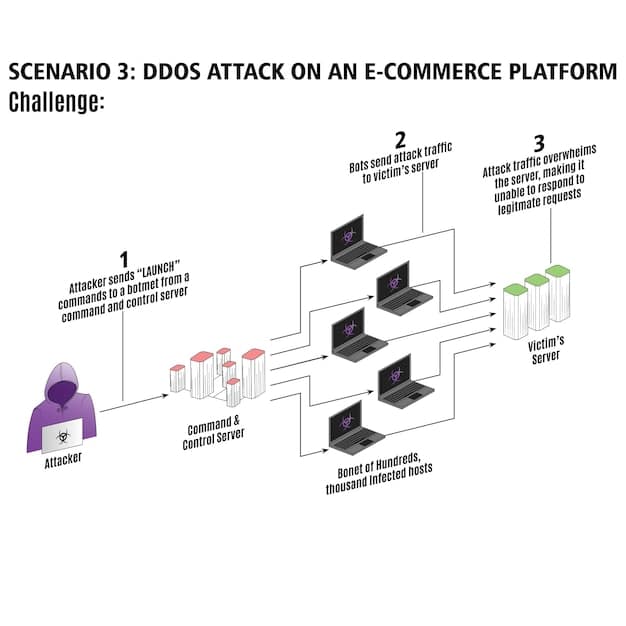Smart Contract Vulnerabilities: Top 5 Mistakes US Developers Make

Smart Contract Vulnerabilities: Top 5 Mistakes US Developers Make and How to Avoid Them examines the common errors leading to security breaches in smart contracts. Understanding these vulnerabilities is crucial for developers to create secure and reliable blockchain applications.
The world of blockchain and decentralized applications (dApps) is rapidly evolving, and smart contracts are at its core. These self-executing agreements automate processes and bring trust to digital interactions. However, smart contract vulnerabilities: top 5 mistakes US developers make and how to avoid them are a significant concern, threatening the security and reliability of these innovative technologies.
This article will delve into the most common pitfalls that US developers face when writing smart contracts, shedding light on how to prevent these mistakes and build more secure and robust blockchain applications, ensuring smart contract vulnerabilities: top 5 mistakes US developers make and how to avoid them are addressed proactively.
Understanding Smart Contract Vulnerabilities
Smart contracts, while revolutionary, are susceptible to vulnerabilities that can be exploited by malicious actors. Understanding smart contract vulnerabilities: top 5 mistakes US developers make and how to avoid them is essential for safeguarding digital assets and maintaining the integrity of blockchain systems. These vulnerabilities often arise from coding errors, logical flaws, or misunderstandings of the underlying blockchain architecture.
Different types of vulnerabilities exist, including reentrancy attacks, integer overflows, and timestamp dependencies. Each of these poses a unique threat and requires specific mitigation strategies to ensure smart contract vulnerabilities: top 5 mistakes US developers make and how to avoid them are managed effectively.
Common Types of Smart Contract Vulnerabilities
Several common vulnerability types can compromise smart contracts. Identifying and understanding these is the first step in prevention.
- Reentrancy Attacks: Occur when a contract recursively calls itself, potentially draining funds.
- Integer Overflows: Happen when arithmetic operations exceed the maximum value of an integer, leading to unexpected behavior.
- Timestamp Dependencies: Relying on block timestamps for critical logic can be manipulated by miners.
- Denial-of-Service (DoS) Attacks: Overwhelm a contract with transactions, rendering it unusable.
- Unhandled Exceptions: Improper error handling can lead to unexpected contract states.
Mitigating these vulnerabilities requires a combination of secure coding practices, rigorous testing, and continuous monitoring. The aim is to ensure smart contract vulnerabilities: top 5 mistakes US developers make and how to avoid them are addressed and eliminated throughout the development lifecycle.

Failing to address these vulnerabilities can result in significant financial losses, damage to reputation, and erosion of trust in blockchain technologies. Developing robust and secure smart contracts is paramount, emphasizing the importance of understanding smart contract vulnerabilities: top 5 mistakes US developers make and how to avoid them.
Mistake 1: Neglecting Proper Access Control
Access control is a critical aspect of smart contract security, determining who can interact with specific functions and data. Neglecting proper access control can lead to unauthorized actions and data breaches, highlighting the importance of addressing smart contract vulnerabilities: top 5 mistakes US developers make and how to avoid them through effective access control mechanisms.
Many US developers overlook the complexities of access control, leaving contracts vulnerable to exploitation. Implementing robust authentication and authorization protocols is essential for maintaining the integrity and security of smart contracts.
Implementing Role-Based Access Control (RBAC)
RBAC involves assigning specific roles to different users or contracts, granting them predetermined permissions.
- Define clear roles and their associated permissions.
- Use modifiers to restrict access to functions based on roles.
- Regularly review and update roles and permissions as needed.
By implementing RBAC, developers can ensure that only authorized entities can perform sensitive operations, mitigating smart contract vulnerabilities: top 5 mistakes US developers make and how to avoid them related to unauthorized access.
Access control misconfigurations can be exploited to manipulate contract logic, steal funds, or disrupt services. The effective execution of RBAC can minimize the chances of these scenarios.
Effective access control is not just about restricting access; it also involves providing the right level of access to the right entities at the right time. Properly done access control represents a critical investment ensuring smart contract vulnerabilities: top 5 mistakes US developers make and how to avoid them are minimized.
Mistake 2: Ignoring Reentrancy Attacks
Reentrancy attacks are among the most notorious smart contract vulnerabilities, allowing malicious contracts to recursively call a vulnerable contract before the initial call completes. Ignoring these attacks can result in significant financial losses, emphasizing the need to understand smart contract vulnerabilities: top 5 mistakes US developers make and how to avoid them, particularly concerning reentrancy.
US developers must be vigilant in identifying and mitigating reentrancy vulnerabilities to protect their smart contracts from exploitation. Implementing preventive measures is crucial for maintaining the security and reliability of blockchain applications.
Using Checks-Effects-Interactions Pattern
The Checks-Effects-Interactions pattern is a widely recommended approach to prevent reentrancy attacks.
- Checks: Verify conditions before performing any actions.
- Effects: Update the contract’s state before interacting with other contracts.
- Interactions: Perform external calls only after all state changes are complete.
By following this pattern, developers can ensure that state changes are finalized before external calls, mitigating the risk of reentrancy attacks and minimizing smart contract vulnerabilities: top 5 mistakes US developers make and how to avoid them.

Reentrancy attacks can be particularly devastating in contracts that handle large amounts of funds. Vigilant developers who address smart contract vulnerabilities: top 5 mistakes US developers make and how to avoid them by using the right methodologies can prevent such attacks and ensure their users are protected.
Adopting these preventive measures is paramount for protecting smart contracts from reentrancy attacks. By understanding and implementing these strategies, developers can significantly reduce the risk of exploitation, contributing to the overall security and reliability of the blockchain ecosystem. The awareness of smart contract vulnerabilities: top 5 mistakes US developers make and how to avoid them, therefore, saves time, money and heartache for everyone.
Mistake 3: Overlooking Integer Overflow and Underflow
Integer overflow and underflow vulnerabilities occur when arithmetic operations exceed the maximum or fall below the minimum value that an integer can hold. Overlooking these issues can lead to unexpected behavior and security breaches, making it essential to address smart contract vulnerabilities: top 5 mistakes US developers make and how to avoid them related to integer handling.
US developers must be aware of the potential risks associated with integer arithmetic and implement appropriate safeguards to prevent these vulnerabilities from being exploited.
Using Safe Math Libraries
Safe math libraries provide functions that check for overflows and underflows, reverting transactions if such conditions occur.
- Import and use a trusted safe math library.
- Replace standard arithmetic operators with safe math functions.
- Test thoroughly to ensure proper handling of edge cases.
By utilizing safe math libraries, developers can ensure that arithmetic operations are performed safely, preventing integer overflow and underflow vulnerabilities and mitigating smart contract vulnerabilities: top 5 mistakes US developers make and how to avoid them.
By identifying and mitigating these issues, developers can ensure the integrity and reliability of smart contracts, preventing unexpected outcomes and protecting against potential exploitation.
Safe math libraries are a small but critical precaution for developers to ensure smart contract vulnerabilities: top 5 mistakes US developers make and how to avoid them are not overlooked. Doing so makes operations much safer and more reliable.
Mistake 4: Ignoring Denial-of-Service (DoS) Attacks
Denial-of-Service (DoS) attacks aim to overwhelm a smart contract with transactions, making it unusable for legitimate users. Ignoring these attacks can disrupt services and cause significant inconvenience. This is a critical area where US developers need to focus when addressing smart contract vulnerabilities: top 5 mistakes US developers make and how to avoid them.
Developers must implement strategies to mitigate DoS attacks and ensure the availability and accessibility of their smart contracts.
Implementing Gas Limits and Pagination
Gas limits restrict the amount of computational resources a transaction can consume, while pagination breaks down large operations into smaller, manageable chunks.
- Set reasonable gas limits for contract functions.
- Implement pagination for operations that process large datasets.
- Monitor contract performance and adjust gas limits as needed.
By implementing gas limits and pagination, developers can prevent malicious actors from monopolizing contract resources and mitigate DoS attacks, addressing smart contract vulnerabilities: top 5 mistakes US developers make and how to avoid them effectively.
Addressing DoS attacks is imperative for maintaining the usability and reliability of smart contracts and thus highlighting the importance of preventing smart contract vulnerabilities: top 5 mistakes US developers make and how to avoid them.
It is essential to implement safeguards that protect against DoS attacks. This ensures that the smart contract remains accessible and functional under various conditions.
Mistake 5: Failing to Conduct Thorough Testing
Testing is a crucial phase in the smart contract development lifecycle, ensuring that the contract functions as expected and is free from vulnerabilities. Failing to conduct thorough testing can result in undetected bugs and security flaws, underscoring the importance of addressing smart contract vulnerabilities: top 5 mistakes US developers make and how to avoid them through rigorous testing practices.
US developers should adopt comprehensive testing strategies that cover a wide range of scenarios and potential attack vectors.
Using Unit Tests and Fuzzing
Unit tests verify the functionality of individual contract components, while fuzzing involves providing random inputs to identify unexpected behavior.
- Write comprehensive unit tests for all contract functions.
- Use fuzzing tools to identify edge cases and potential vulnerabilities.
- Regularly update and expand test suites as the contract evolves.
By using unit tests and fuzzing, developers can identify and fix bugs early in the development process, mitigating the risk of exploitation and addressing smart contract vulnerabilities: top 5 mistakes US developers make and how to avoid them.
Thorough testing not only uncovers vulnerabilities but also builds confidence in the contract’s reliability, reinforcing the importance of minimizing smart contract vulnerabilities: top 5 mistakes US developers make and how to avoid them.
Developers who rigorously test their creations have more success and avoid pitfalls related to smart contract vulnerabilities: top 5 mistakes US developers make and how to avoid them. This improves their processes and user confidence.
| Key Point | Brief Description |
|---|---|
| 🛡️ Access Control | Implement robust access controls to prevent unauthorized actions. |
| 🔄 Reentrancy Attacks | Utilize Checks-Effects-Interactions pattern to prevent recursive calls. |
| 🧮 Integer Handling | Employ safe math libraries to avoid overflow and underflow. |
| 🚫 DoS Attacks | Set gas limits and pagination to prevent service disruptions. |
Frequently Asked Questions
The most common smart contract vulnerabilities include reentrancy attacks, integer overflows/underflows, timestamp dependencies, and denial-of-service (DoS) attacks. Identifying and understanding these is key to addressing smart contract vulnerabilities: top 5 mistakes US developers make and how to avoid them.
To prevent reentrancy attacks, use the Checks-Effects-Interactions pattern. This involves verifying conditions, updating state, and then interacting with other contracts. This pattern helps ensure that state changes are finalized before external calls.
Integer overflow and underflow vulnerabilities occur when arithmetic operations exceed the maximum or fall below the minimum value an integer can hold. Using safe math libraries can prevent these issues, ensuring smart contract vulnerabilities: top 5 mistakes US developers make and how to avoid them related to arithmetic operations are minimized.
To protect against DoS attacks, implement gas limits and pagination. Gas limits restrict transaction resource consumption, and pagination breaks down large operations. Monitoring contract performance and adjusting gas limits is also crucial.
Testing is crucial for identifying vulnerabilities and ensuring contract functionality. Using unit tests and fuzzing can uncover bugs early, mitigating the risk of exploitation. In summary, thorough testing is essential to ensuring smart contract vulnerabilities: top 5 mistakes US developers make and how to avoid them are minimized.
Conclusion
Addressing smart contract vulnerabilities: top 5 mistakes US developers make and how to avoid them is paramount for building secure and reliable blockchain applications. By focusing on access control, reentrancy prevention, integer handling, DoS mitigation, and thorough testing, US developers can significantly enhance the security of their smart contracts.
Prioritizing security best practices ensures the integrity and reliability of blockchain systems, fostering trust and confidence in decentralized technologies. Remember to also always seek to prevent smart contract vulnerabilities: top 5 mistakes US developers make and how to avoid them.





